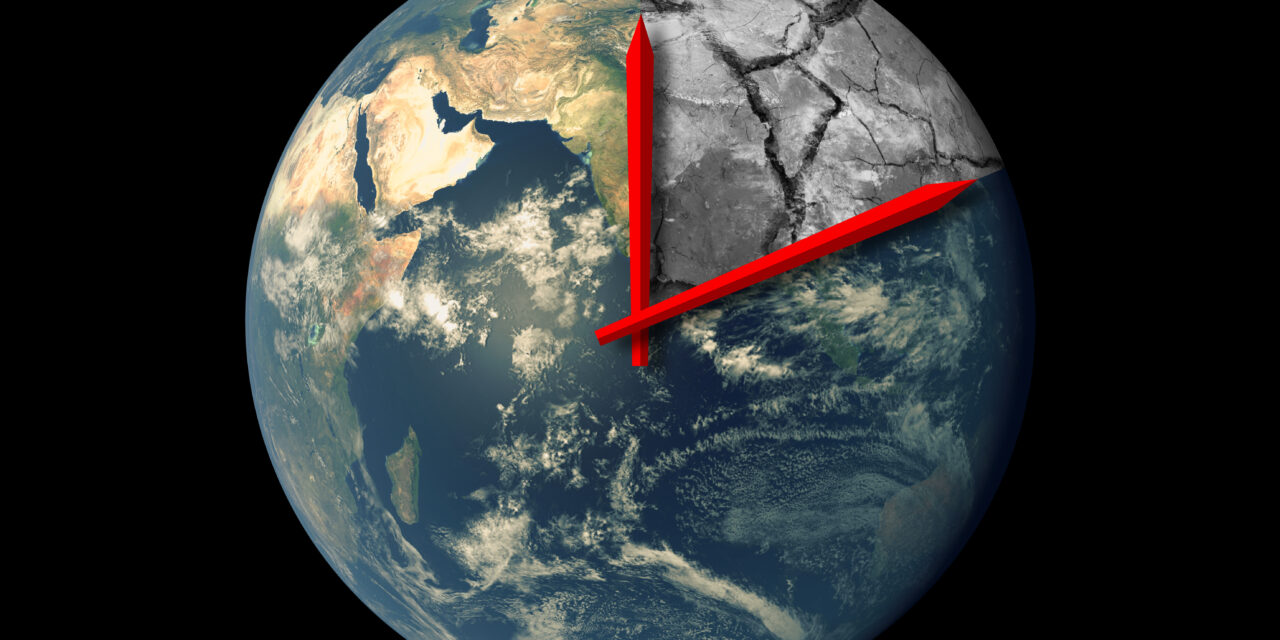Is humanity on the verge of being wiped out?
Pop voices and countless Hollywood celebrities have warned that unless drastic action is taken at once, we face irrevocable global catastrophe. They are not alone.
- Al Gore warned we have just ten years until the point of no return. He said this in early 2006.
- CBS News reported the United Nations Intergovernmental Panel on Climate Change warned in 2021 that we only have eight years to prevent catastrophic environmental events.
- The World Economic Forum explained that same year that humanity’s catastrophe window – the ominous point of no return – sits between 2027 and 2042.
- In 2019, the United Nations stated that speakers at one of their “high-level meetings” warned “only 11 years left to prevent irreversible damage from climate change.” “We are the last generation that can prevent irreparable damage to our planet,” General Assembly President María Fernanda Espinosa Garcés of Ecuador warned.
Numerous climate clocks mark the start of the earth’s end just a few short years from today, like this one in New York City. Intriguingly, under the science sections of their website, creators of these eco-doomsday clocks have recently placed “gender parity” as an essential “new lifeline” against impending doom. How is that science?
“Climate anxiety” has reached such a fevered pitch among young people across the globe that the Lancet issued a special “call to action” a few years back to help with the problem. And this fear is having a tangible impact on the future of humanity itself. More recently, Lancet reports four in 10 young people globally confess being hesitant to have children due to climate anxiety.
But none of these doom predictions are based on actual science. Their foundation is ideological hysteria.
The most sophisticated examination of science’s ability to determine the earth’s eco-doom point-of-no-return was published in 2020 in the journal Nature Ecology and Evolution. This powerhouse study drew from 36 meta-analyses, involving more than 4,600 individual studies spanning the last 45 years and were examined by nine ecologists working from universities in Germany, France, Ireland, and Finland. The study’s conclusion is that empirical data simply do not permit the determination of any kind of environmental dooms date, or “threshold” as scientists call them.
These scholars state frankly: “We lack systematic quantitative evidence as to whether empirical data allow definition of such thresholds” and “our results thus question the pervasive presence of threshold concepts” found in environmental politics today.
A more recent 2022 study published in the Annual Review of Environment and Resources explains that “much of the controversy surrounding thresholds concerns their actual existence in nature” adding “any proposed threshold values are often contentious and of questionable utility due to” the complex adaptability of the biosphere and the profound difficulty of measuring such things successfully on a global scale. Given this fact, this newer report explains, “Despite great interest in ecological thresholds from a scientific and policy perspective, we are still a long way off from understanding their prevalence and predictability in the real world.”
Fear mongering about a ticking dooms day eco-clock is simply dogma. Tell your kids to rest easy and don’t fear having more.
Additional Resources
No, The World Does Not Have Too Many People. It Has Too Few
Births in Japan Fall to Record Low Amid Catastrophic Population Decline, Foretelling World’s Future
Japanese Prime Minister Warns of Imminent Societal Collapse Due to Low Birth Rate
‘60 Minutes’ Platforms New Environmental Alarmism from Man Who’s Been Famously Wrong for 50+ Years
Photo from Shutterstock.






